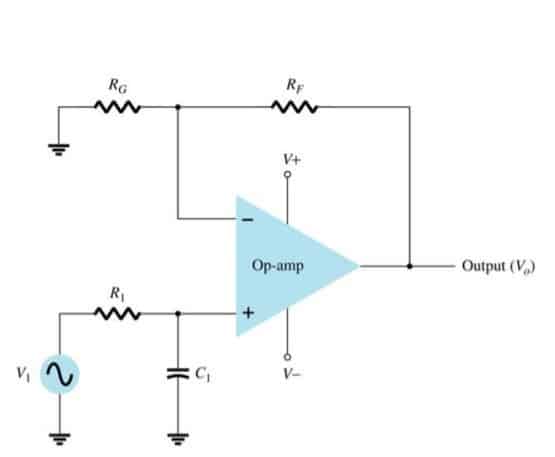How to Build an Active Low Pass Filter Circuit with an Op Amp Circuit Diagram When used like this in audio applications the active low pass filter is sometimes called a "Bass Boost" filter. Second-order Low Pass Active Filter. As with the passive filter, a first-order low-pass active filter can be converted into a second-order low pass filter simply by using an additional RC network in the input path. The frequency In an active low pass filter, the peak of the passband of the filter can be much larger than the input voltage signal because there is amplification. For passive low pass filters to be built, all that is required are resistors and capacitors. Active low pass filters require either transistors or op amps to provide amplification to the circuit. range. Bessel low-pass filters, therefore, provide an optimum square-wave transmission behavior. However, the passband gain of a Bessel low-pass filter is not as flat as that of the Butterworth low-pass, and the transition from passband to stopband is by far not as sharp as that of a Tschebyscheff low-pass filter (Figure 16- 9).

Second-Order Active High-Pass Filter. If we swap the resistor and capacitor in an RC low-pass filter, we convert the circuit into a CR high-pass filter. We can then cascade two CR high-pass filters to create a second-order CRCR high-pass filter. If we incorporate this passive configuration into the Sallen-Key topology, we have the following:

Active Low Pass Filter: Design and Applications Circuit Diagram
Step-by-step design of Active low pass filter using Op Amplifier.

Hi, thanks for watching our video about active filters! In this video we'll walk you through:- How to design, simulate and build active opamp filters- Using View full article: https://www.allaboutcircuits.com/video-tutorials/op-amp-applications-low-pass-and-high-pass-active-filters/In this video we will explore a The basic configuration for an active low-pass filter using an operational amplifier is as follows: Place the operational amplifier (op-amp) on a breadboard. Connect a resistor (R) between the input signal source and the non-inverting input ( V in ) of the op-amp.

